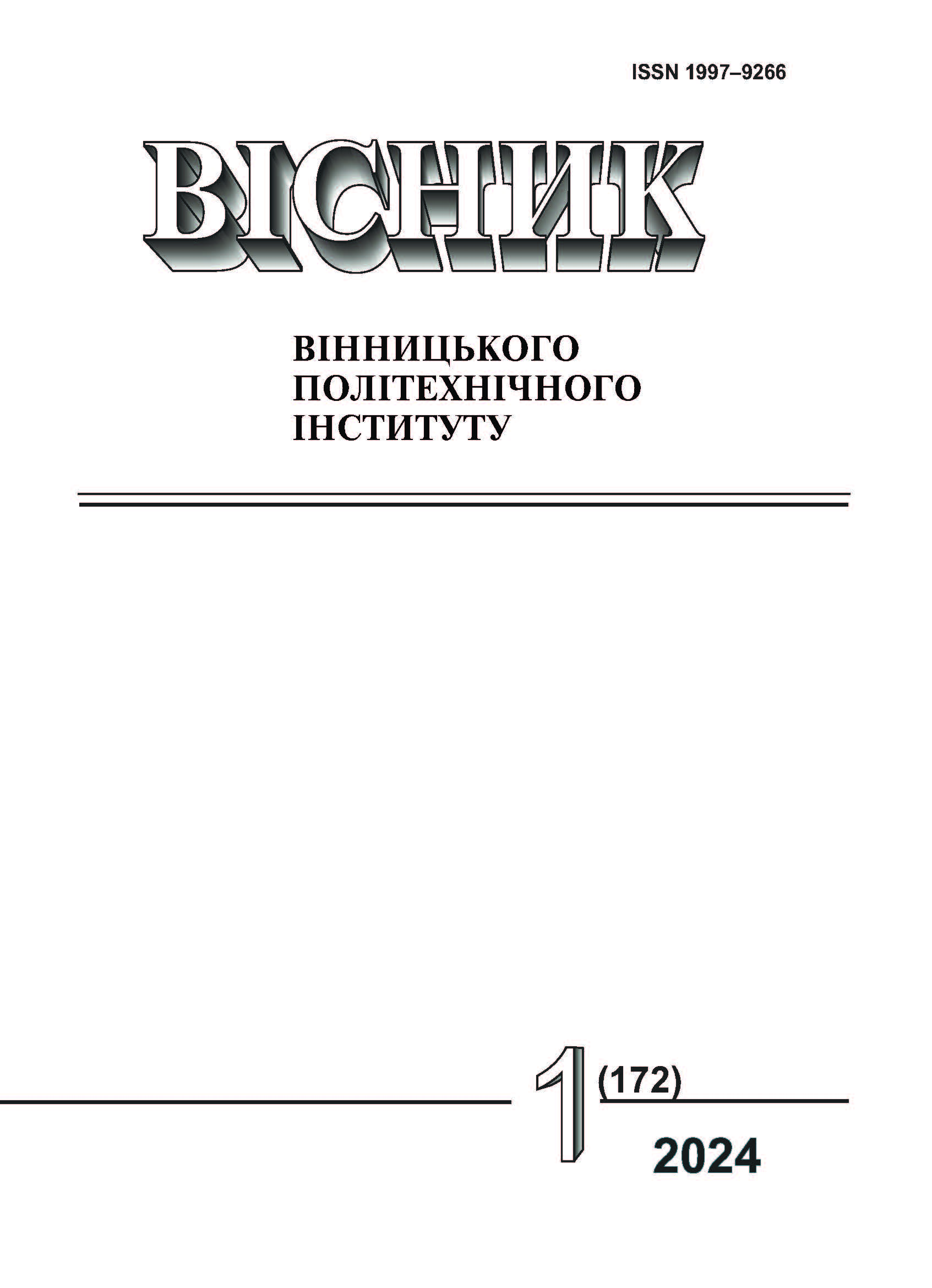Transmitting Device of the Azimuthal Channel for the Ground Equipment of the Tacan-Type Radio Navigation System
DOI:
https://doi.org/10.31649/1997-9266-2024-172-1-146-153Keywords:
azimuth channel, radio technical system of short-range navigation, transmitting deviceAbstract
The need to develop Air Force management processes of the Armed Forces of Ukraine determines the development of modernized short-range navigation systems. One of the urgent tasks at the present stage is aviation radio navigation aids and short-range navigation systems which are used to ensure the flights of the Air Force of the Armed Forces of Ukraine. The purpose of the work is to analyze the existing radio technical systems of short-range radio navigation, to determine directions regarding the construction structure of the transmission device of the azimuth channel of ground equipment by analyzing the comparison of different types of ground equipment of short-range radio navigation systems. An important and still unsolved problem is that currently in Ukraine it is planned to re-equip several bases and operational airfields with a radio technical support system, which must be converted in accordance with NATO and ICAO requirements. At the initial stage, the purchase of several ground beacons of short-range navigation systems of the TACAN-type from partner countries is envisaged. To refurbish all state aviation airfields, it is advisable to develop a domestic air traffic control system in accordance with NATO and ICAO requirements. According to the principles of the structure of the azimuth channel, the ground equipment of the domestic SBNs of the RSBN-4N type is not capable of providing azimuth measurement on board F-16 aircraft during operation of TACAN-type SBN onboard equipment. In the work, the existing short-range radio navigation systems are analyzed, the tactical and technical requirements for the short-range navigation system of the TACAN-type are substantiated, and the functional scheme of the transmitting device of the azimuth channel of the ground equipment of the TACAN-type radio navigation system is developed.
References
П. Ю. Костенко, О. В. Висоцький, В. І. Василишин, і О. В. Нікітін, Теорія радіонавігаційних систем. Частина 1, навч. посіб. Харків, Україна: ХУПС, 2013, 120 с.
О. В. Нікітін, С. І. Сиващенко, В. І. Василишин, і М. М. Хмуров, Військова техніка радіотехнічного забезпечення авіації Повітряних Сил. Частина 1. Пристрої і системи ближньої навігації та інструментальної посадки, навч. посіб. Харків, Україна: ХУПС імені І Кожедуба, 2007, 142 с.: іл.
П. В. Олянюк, Г. П. Остафьєв, і В. В. Грачєв, Радіотехнічні пристрої і системи цивільної авіації, підруч. для вузів. Миколаїв, Україна, 2007.
А. Д. Трояновский, А. М. Клуга, і Б. Я. Циклер, Бортове обладнання радіосистем ближньої навігації, підруч. для вузів. Миколаїв, Україна, 2009.
С. І. Сиващенко, та ін. Радіонавігаційні системи. Ч.1. Радіонавігаційні системи ближньої навігації, навч. посіб. Харків, Україна: ХУПС, 2014, 164 с.
А. А. Сосновский, И. А. Хаймович, Э. А. Лутин, і И. Б. Максимов, Авіаційна радіонавігація, навч. посіб. Миколаїв, Україна, 2008.
Опорний генератор Гиацинт-М, технічний опис. ИГ2, 2010, 98с.
О. В. Мурашкин, Основи побудови радіотехнічної системи дальньої навігації. Частина VII. Пункт контрольний пересувний наземної станції РСДН-10, навч. посіб. ХІЛ ВПС, 2007.
Я. Д. Ширман, Теоретичні основи радіолокації: посібник для вузів. Миколаїв, Україна: 2007.
С. І. Сиващенко, В. М. Субота, О. В. Нікітін, А. В. Лопатін, і В. О. Лєбєдєв, Радіонавігаційні системи. Частина 1. Радіонавігаційні системи ближньої навігації, навч. посіб. Харків, Україна, 2014.
О. В. Нікітін, В. О. Лєбєдєв, С. І. Сиващенко, В. В. Захарченко, і О. А. Павлічнко, Радіонавігаційні системи. Частина 1. Радіонавігаційні системи ближньої навігації, навч. посіб. Харків, Україна, 2018.
Downloads
-
PDF (Українська)
Downloads: 104
Published
How to Cite
Issue
Section
License

This work is licensed under a Creative Commons Attribution 4.0 International License.
Authors who publish with this journal agree to the following terms:
- Authors retain copyright and grant the journal right of first publication.
- Authors are able to enter into separate, additional contractual arrangements for the non-exclusive distribution of the journal's published version of the work (e.g., post it to an institutional repository or publish it in a book), with an acknowledgment of its initial publication in this journal.
- Authors are permitted and encouraged to post their work online (e.g., in institutional repositories or on their website) prior to and during the submission process, as it can lead to productive exchanges, as well as earlier and greater citation of published work (See The Effect of Open Access).





